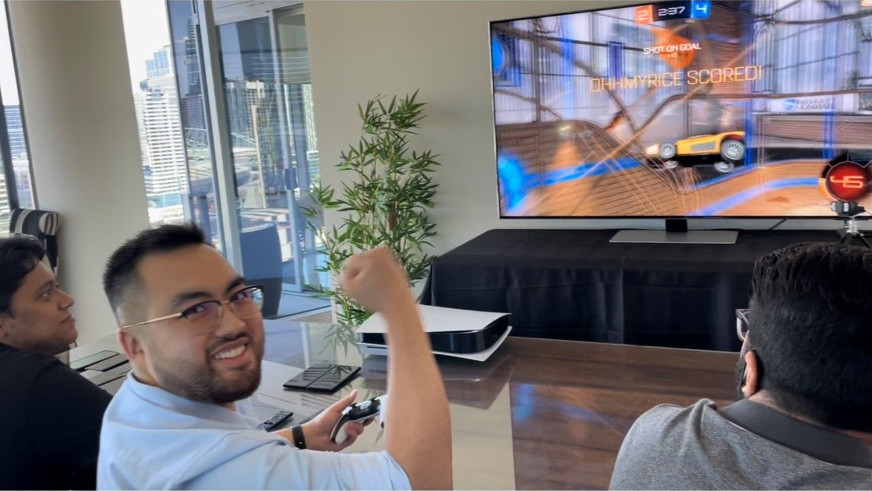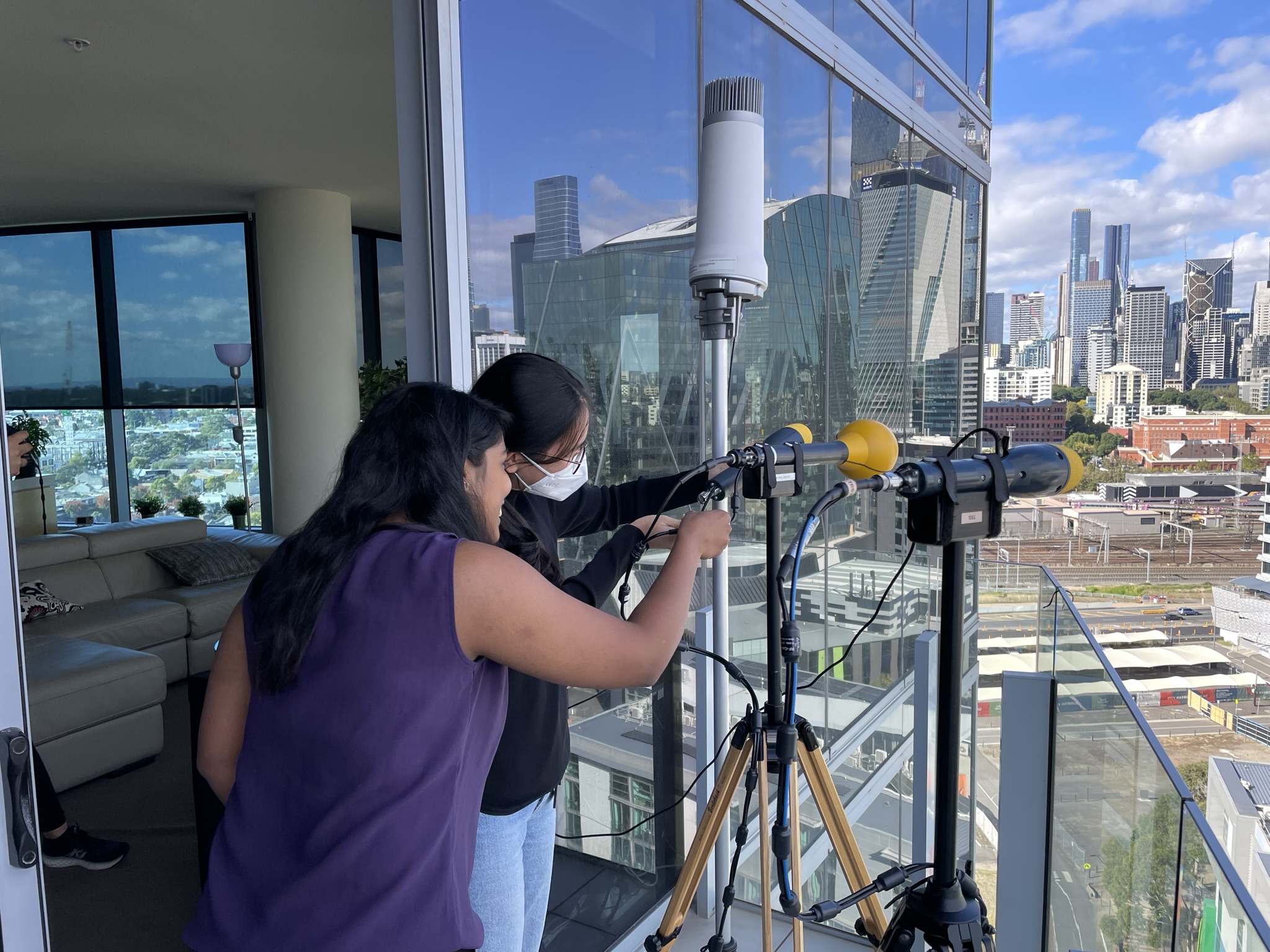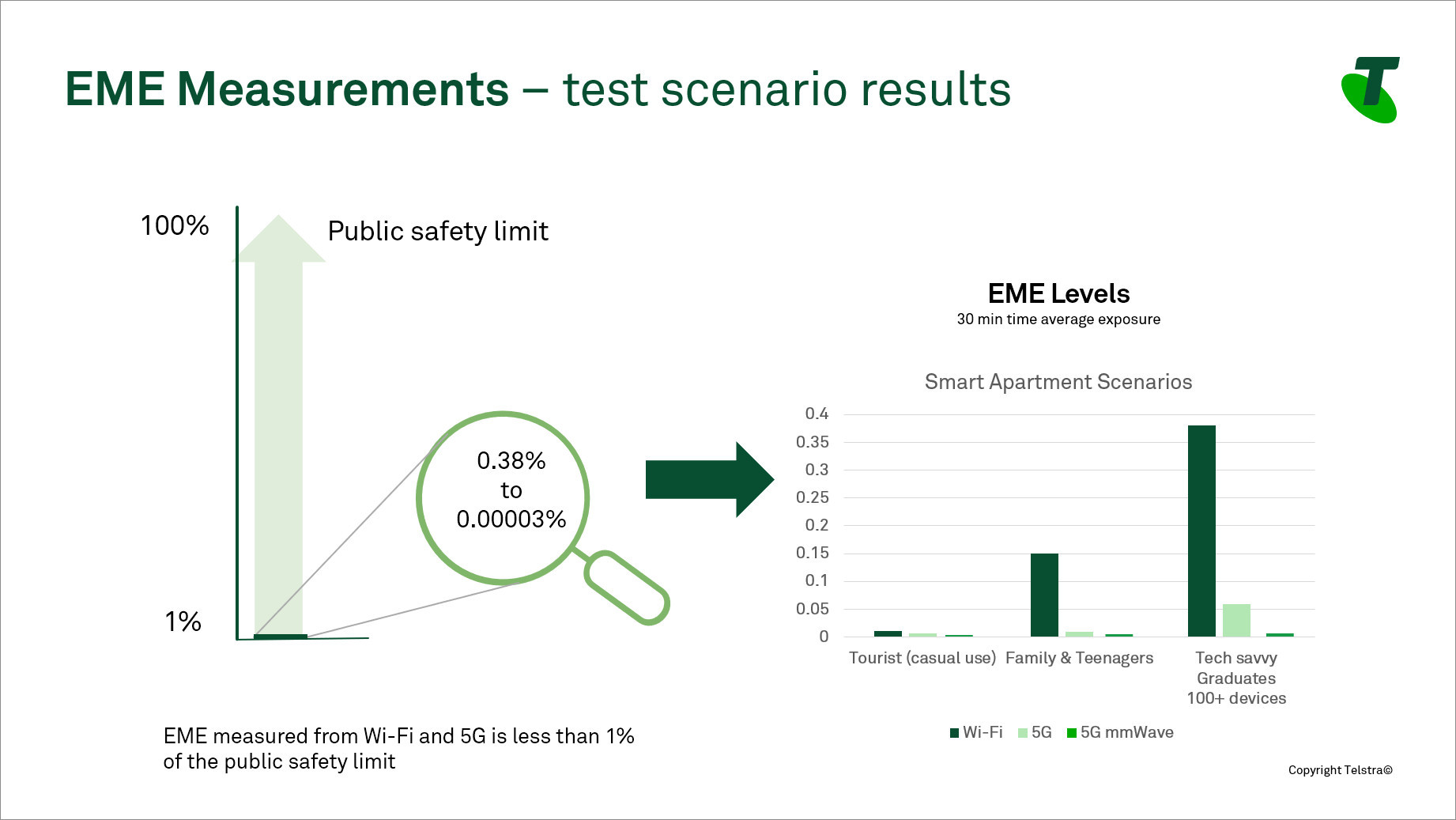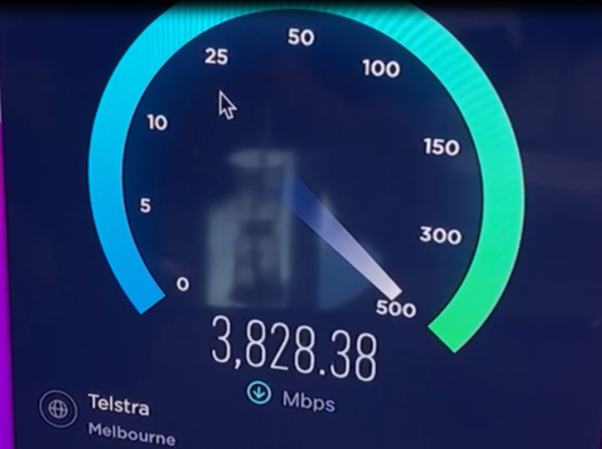The world’s best Smart Apartment tests 5G and Wi-Fi with up to 100 devices at once
Our latest 5G Smart Apartment test shows off the seamless connectivity, hybrid working and low EME levels of both 5G and Wi-Fi technology.
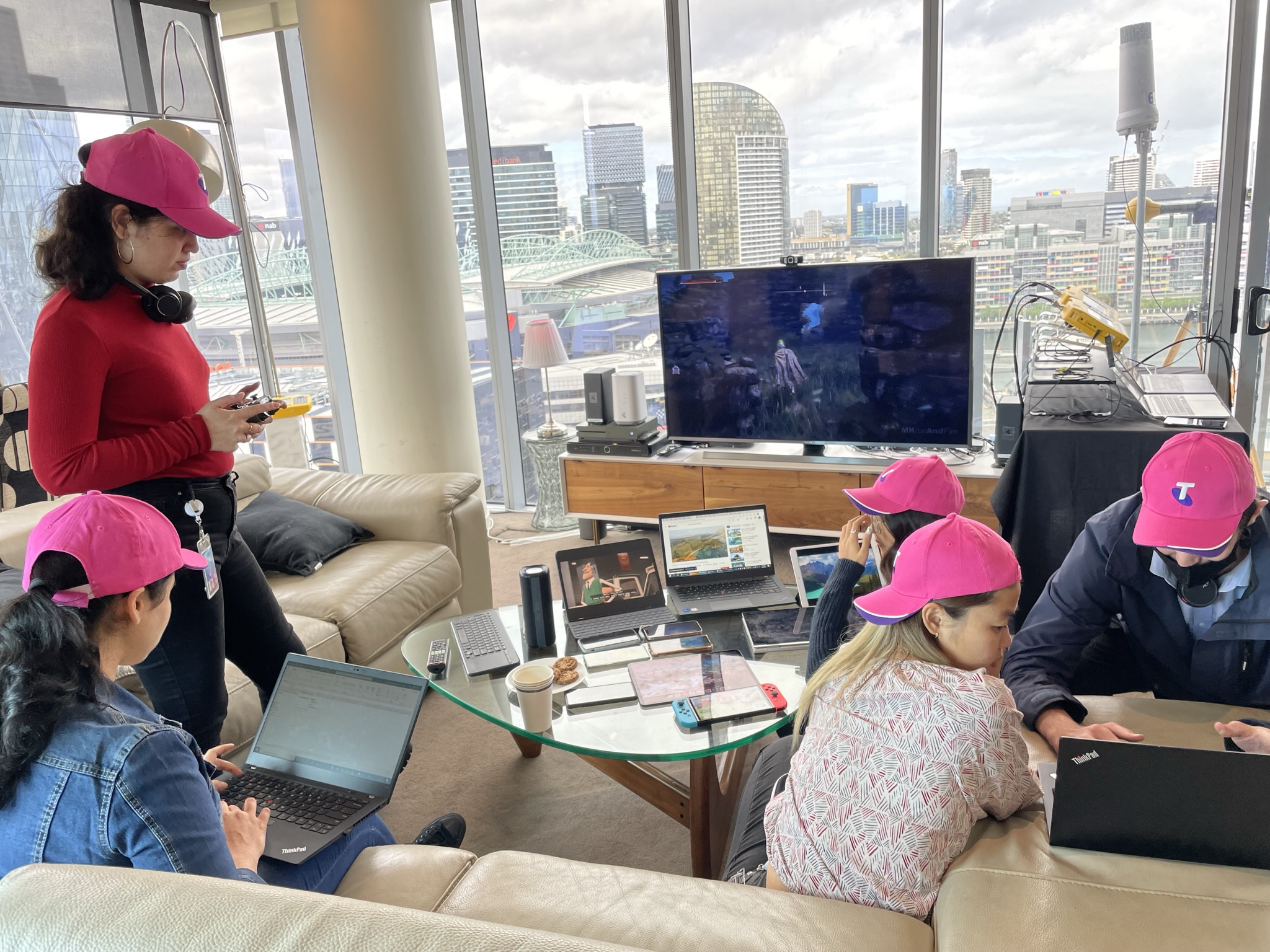
Our latest 5G Smart Apartment test shows off the seamless connectivity, hybrid working and low EME levels of both 5G and Wi-Fi technology.
How do you connect over 100 devices in one apartment, and create a fully connected hybrid living and working experience – while barely moving the needle on 5G electromagnetic energy (EME) levels?
That’s precisely what a team of Telstra’s top graduates have recently achieved at our test site in Melbourne’s Docklands.
Setting up our 5G Smart Apartment with the latest tech
How many connected devices do you have inside your home? In a recent survey of Telstra employees, we found that most people have between 15-25 connected devices. With this in mind, we wanted to see how many devices we could connect within one space.
To do that, we set ourselves a challenge – create a fully connected 5G smart apartment, using the latest 5G mmWave technology as well as Wi-Fi, and connect as many devices as possible to enable hybrid living and working. Oh, and it had to be a great learning experience and a fun place to work. No small challenge for our graduate team!
Putting the Smart Apartment to the test with different scenarios
The 5G connection in our Smart Apartment used the latest 5G mmWave technology, with our 5G Home Broadband modem communicating with the nearest base station and delivering excellent connectivity and speeds. We also had various 5G mobile broadband ‘hotspot’ devices in use for different tests.
Our Gen3 Smart Modem was also connected to a 5G mobile broadband device to share Wi-Fi coverage across the entire apartment space, with the Smart Modem’s latest Wi-Fi 6 standard allowing the full 5G mmWave capabilities to be shared across many devices simultaneously.
Hybrid Working during a typical day – this test started with a great coffee from one of the local cafés that Melbourne is renowned for – and a couple more during the day from the smart coffee machine in the apartment!
With working from home being normal for many people these days, the graduates simulated a busy work and home life test environment to put 5G through its paces whilst continuing their day jobs from the apartment.
Gaming over 5G – I haven’t met a graduate yet that doesn’t like online gaming – so what an opportunity to test the experience over 5G!
With the low latency of 5G mmWave, our grads achieved very low latency (or ‘ping’ times) and very fast responsiveness to their controls in-game, certainly giving them an extra edge over other gamers.
We also compared the experience on mid-band 5G to the higher frequencies of mmWave, to demonstrate the increased potential of our latest tech.
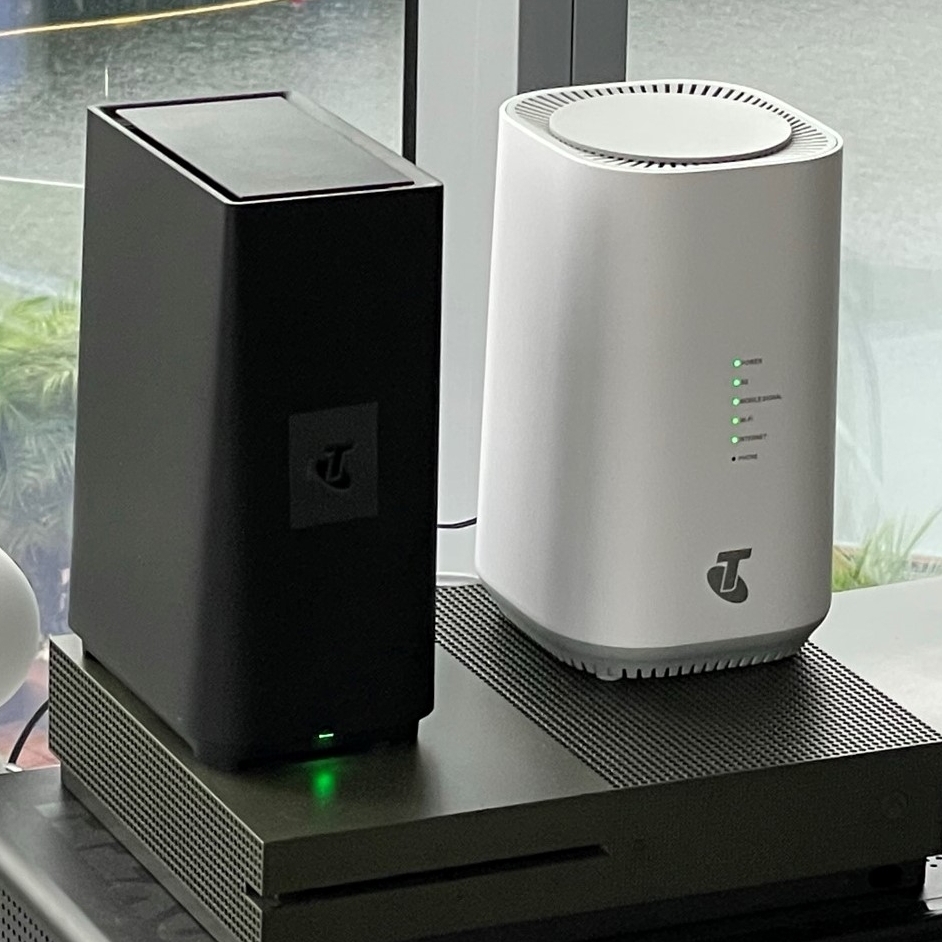
Testing new 5G devices – this was a key aspect of the learning experience.
The grads tested a number of our prototype Fixed Wireless Access 5G mmWave modems in the apartment, to test their performance indoors and outside – including how glass affects the reception of mmWave signals.
Telstra’s 5G Wi-Fi Pro and the new Nighthawk M6 Pro were also tested and both provided excellent connections.
Our investigations concluded that 5G mmWave connections indoors were best at near the front windows that faced the base station, and mid-band 5G worked consistently well throughout the entire apartment.
Three EME testing scenarios – a tourist, a family & teenagers, and our tech-savvy graduates
With the apartment fully configured with super-fast 5G, 5G powered Wi-Fi, gaming and Google smart home devices, we set up three distinct use cases over a few weekends to test the electromagnetic energy (EME) levels for:
- a tourist
- a family with teenagers and their friends
- a ‘max-out’ challenge with two teams of Telstra graduates
Each group had unlimited data using 5G and 5G powered Wi-Fi throughout the apartment, and we had four EME monitoring stations throughout the apartment that were continuously recording EME levels.
These different groups ensured that we could really characterise how 5G worked in the real world, and measure the typical EME levels that people will experience in everyday environments at home.
Our EME test results show 5G EME even lower than Wi-Fi
The graduates really lived up to expectations and put our 5G network to the ultimate test, and during our max-out challenge created the highest load on the network, consuming more than 240GB of data in a couple of hours. Even with the grads loading the network, EME levels were very low and less than 1 per cent of the public safety limit.
Here’s the long story short: Wi-Fi had the highest EME levels in our testing, but still measured less than 1 per cent of the safety limits. 5G had the lowest EME levels, even under extreme load, and those levels were more than 1,000 times lower than the public safety limits.
What does this mean for families and people using Wi-Fi and 5G? Well, it’s certainly reassuring for many families and people working and studying at home. Your home Wi-Fi is well below the public safety limit, around one third of one per cent of government body ARPANSA safety standards.
The tourists’ weekend included a few devices with online web browsing, emails and social media – the kind of experience you’d have if you visited a short-term rental, or stayed the weekend at a friend’s house and brought along your phone and personal devices.
The family weekend was a little more demanding, and included over 30 devices. Our parents had their usual gadgets, but their teenagers (and their friends) were glued to the couch and gaming for many hours – sound familiar?
In our most punishing test, our tech-savvy Telstra graduates included alternate red and blue teams, trying to use as many devices as they possibly could over a few hours – and were really putting it to the test when we topped out at over 100 devices in use in total.
What does this all mean for my every-day Wi-Fi and 5G use at home?
We are often asked whether it is safe to have many devices all running at the same time, including smartphones and Wi-Fi. This ultimate test certainly shows the safety and efficiency of 5G, and just how low the EME levels are even under the extreme loads that the graduates were able to achieve.
To be clear, our max-out challenge – with dozens of devices using Wi-Fi and 5G – produced EME levels around one third of one per cent of the safety standard limit.
Our tests should also reassure anyone concerned about EME and 5G base stations. As can be seen from the results of our testing, the apartment was directly opposite a base station – we measured very low EME levels from the base station, and we also achieved similar readings in other apartments on either side of the 5G smart apartment.
The message from this testing is clear. We have been testing 5G for over five years now, and have found consistent results – the EME levels are typically over 1000 times below the safety limits.
